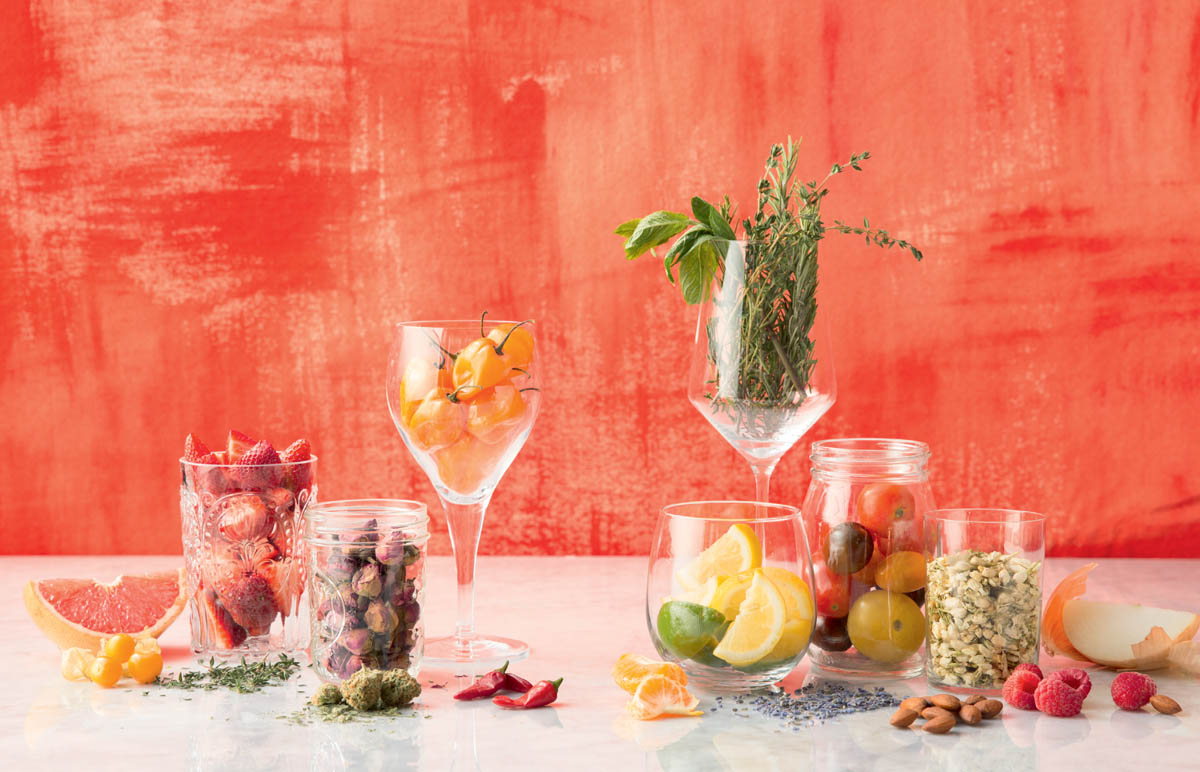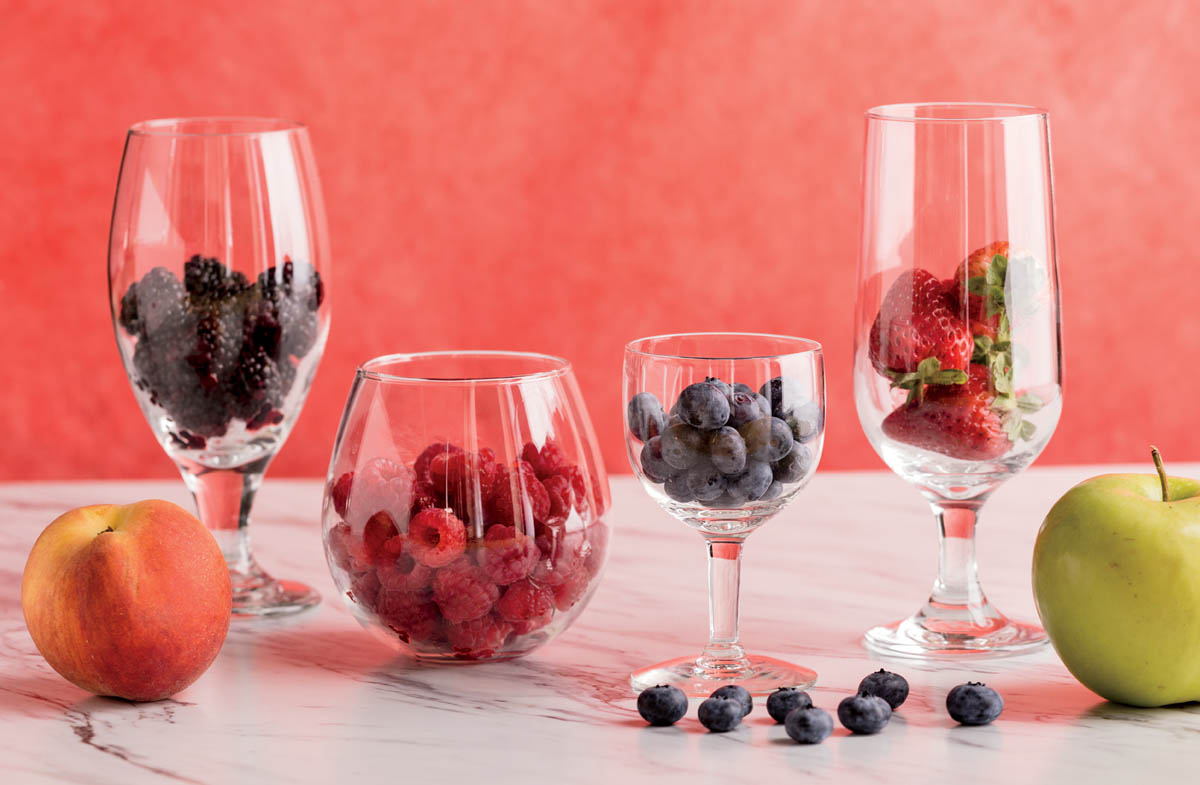

Choose from a wide array of wines to suit the fancy of your moods and the taste preferences of your wine-drinking friends. I’ve included recipes for fruit, vegetable, flower, herb, hot pepper, and cannabis wines in a variety of styles — white, red, sweet, dry, and spicy, some of which are even good served warm. I suggest making a variety of different wines so that you have an appropriate selection to match any occasion. One of my funniest wine-sharing experiences was when I poured two different wines for two ladies in the greenroom backstage at a concert. They each took a sip, made a face, and said, “Eww!” They then traded glasses, each took a sip, and both said, “Ahh.” I’m seldom offended when people don’t like one of my wines, because I can usually offer them something different that they will enjoy.
The recipes here each make 1 gallon of wine. If you plan to make a larger batch, I recommend adding the additional sugar and water in several intervals, as described in chapter 2 (see Step 5: Monitor the Primary Fermentation and Add More Sugar (If Needed)). While the recipes call for specific amounts for the main ingredient(s), these amounts should be understood to be estimates, not absolutes. I generally measure out my ingredients by eye, using volume to judge how much to add. You can vary the amount of fruit or other main ingredient depending on how strong you wish the flavor to be, how much of the main ingredient you have to work with, and the amount of wine you wish to make.
The recipes do not call for sulfites. If you choose to add sulfites to the must, before primary fermentation, wait 24 hours before adding the yeast. If you add sulfites to the wine before bottling, do it 24 hours before bottling to allow sulfur gases to dissipate. The recipes indicate when each wine will be ready to drink, but if you are not adding sulfites, it will likely be too soon to bottle at this time. It is always best to age wine in the jug for as long as possible (6 to 12 months at minimum) before bottling.
It is convenient that some of the easiest wines for beginners are made from the most common fruit trees: apples, cherries, peaches, and plums. If you don’t have any fruits growing in your own yard, it is likely that someone you know does — and that he or she will be happy to share a surplus of the harvest in exchange for some wine.
Berry wines are also good a choice for beginners. Strawberries and blueberries make exceptional wines. Raspberries, blackberries, and mulberries grow wild in many places and can be picked for free. If you need to harvest over a period of time, you can freeze the berries until you have collected enough to make your wine.
I don’t want to discourage you from making whatever variety of wine you wish, but if you’re just getting started, these fruits and berries are widely available, easy to ferment, and make very good wines.
